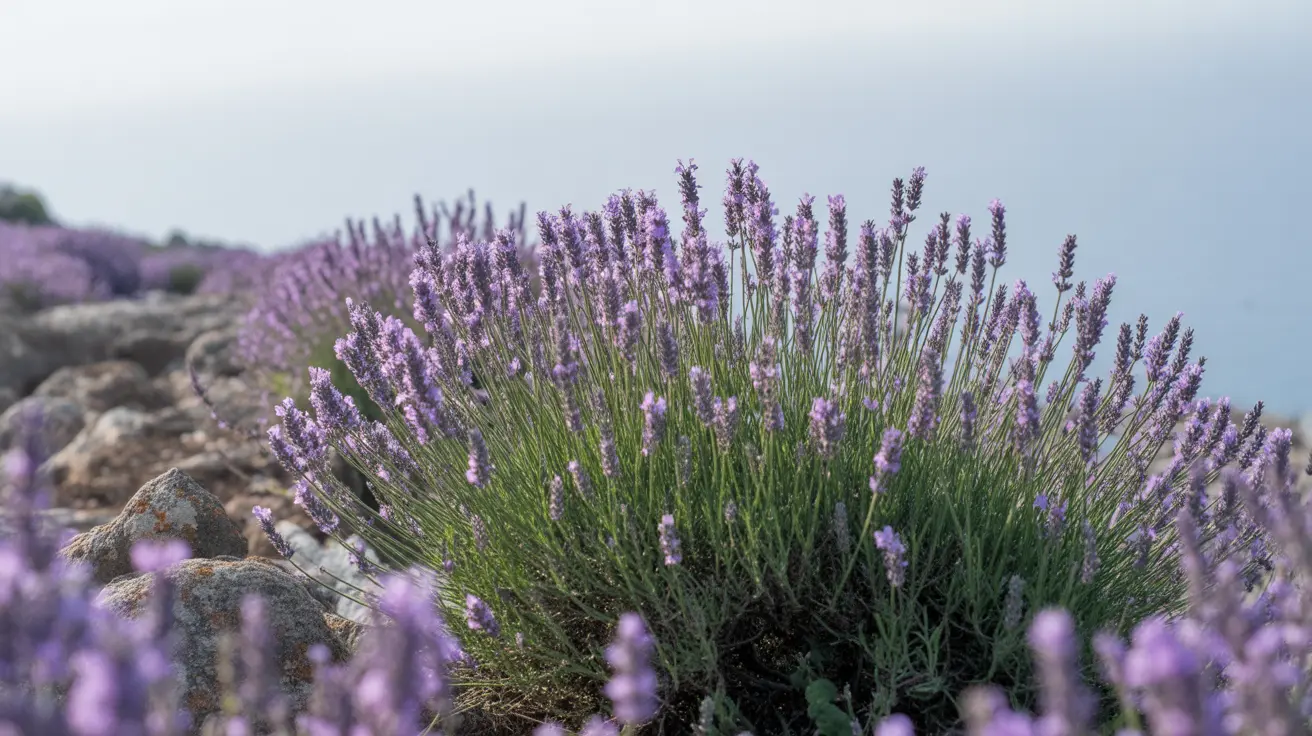Lavender, with its distinctive purple blooms and soothing fragrance, has been cherished for thousands of years as both a decorative plant and therapeutic herb. This versatile member of the mint family has earned its place in gardens, medicine cabinets, and aromatherapy collections worldwide.
From its origins in the Mediterranean to its current global cultivation, lavender continues to captivate people with its calming properties and diverse applications in health, wellness, and home care.
Origins and History of Lavender
Lavender's story begins in the sun-drenched regions of the Mediterranean, where it grew wild among the rocky hillsides. Ancient civilizations, including the Romans, Greeks, and Egyptians, recognized its value for everything from perfuming baths to treating wounds and promoting restful sleep.
The name "lavender" derives from the Latin word "lavare," meaning "to wash," reflecting its historical use in bathing and cleansing rituals. During the Middle Ages, lavender gained prominence in European monasteries, where monks cultivated it for its medicinal properties.
Health Benefits and Uses
Aromatherapy Applications
Lavender essential oil is widely recognized for its therapeutic properties in aromatherapy. When inhaled, its calming scent may help reduce anxiety, improve sleep quality, and promote relaxation. Many people use lavender oil in diffusers, pillow sprays, or add a few drops to their bath water.
Skin Care Benefits
The herb's natural anti-inflammatory and antimicrobial properties make it valuable for skin care. Lavender can help:
- Soothe minor burns and insect bites
- Reduce acne inflammation
- Promote wound healing
- Calm irritated skin conditions
Mental Health Support
Research suggests that lavender may have positive effects on mental well-being, potentially helping with:
- Stress reduction
- Anxiety management
- Mood improvement
- Better sleep quality
Growing and Caring for Lavender
Successful lavender cultivation requires specific conditions and care practices. The plant thrives in:
- Full sunlight
- Well-draining soil
- Alkaline pH levels
- Low to moderate humidity
Regular pruning helps maintain the plant's shape and promotes healthy growth. Most varieties are drought-tolerant once established, making them excellent choices for water-wise gardens.
Popular Lavender Varieties
Different lavender species offer unique characteristics and uses:
- English Lavender (Lavandula angustifolia): Best for culinary use and strongest fragrance
- French Lavender (Lavandula dentata): Ideal for ornamental gardens
- Spanish Lavender (Lavandula stoechas): Known for distinctive top flowers
- Lavandin (Lavandula x intermedia): Popular for essential oil production
Frequently Asked Questions
What is lavender and where does it come from?
Lavender is an aromatic herb in the mint family, originally native to the Mediterranean region. It's characterized by purple flower spikes and a distinctive fragrance, and has been used for centuries in medicine, perfumery, and cooking.
What are the health benefits of using lavender or lavender essential oil?
Lavender offers numerous health benefits, including anxiety reduction, improved sleep quality, skin healing properties, and potential pain relief. The essential oil is particularly effective in aromatherapy for stress management and relaxation.
How can I grow and care for lavender plants successfully?
Lavender requires full sun, well-draining soil, and moderate watering. Plant in spring, maintain good air circulation, prune regularly, and avoid overwatering. Most varieties thrive in USDA zones 5-9.
What are the different types of lavender and how do they differ in use and appearance?
The main types include English, French, Spanish, and Lavandin hybrids. English lavender is best for culinary use, French and Spanish varieties are more ornamental, and Lavandin is primarily grown for essential oil production. Each variety has distinct flower shapes and growth habits.
Is lavender safe to use for anxiety, sleep problems, or skin conditions?
Lavender is generally considered safe for most people when used properly. However, always perform a patch test before applying to skin, and consult a healthcare provider before using for medical conditions, especially if pregnant or taking medications.




